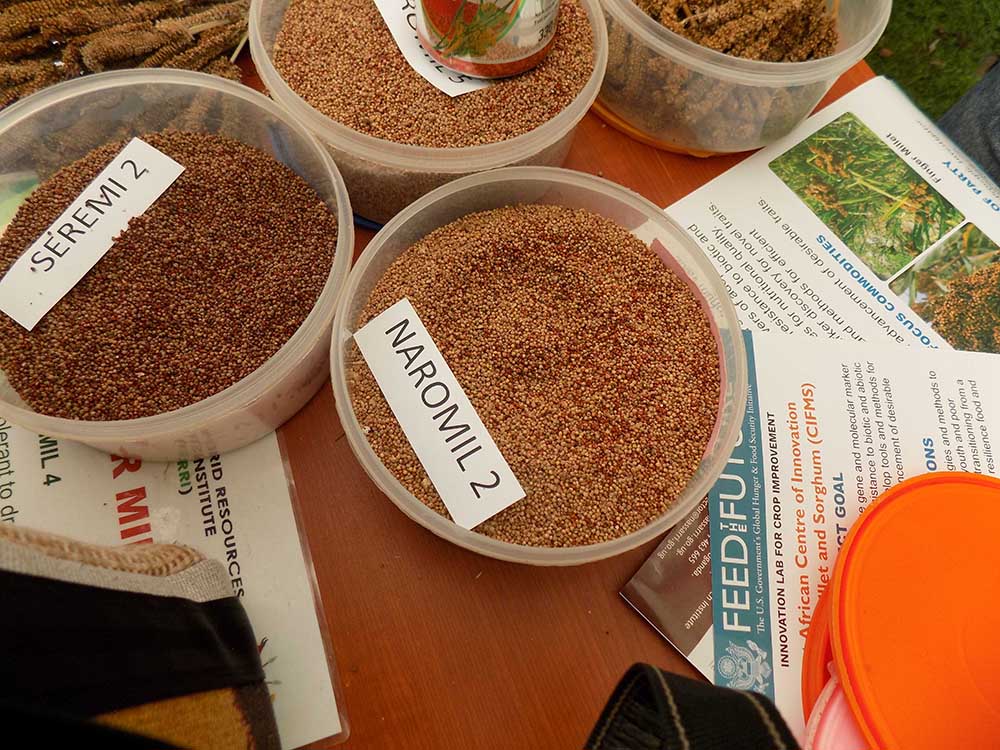By Prossy Nandudu
The agriculture sector rotates around new innovations to move it forward. These include seeds for crops that have to be improved every year for better yields and to combat extremes like diseases. The year 2022 kicked off with many uncertainties, including the farming world. Because the world including Uganda were coming out of a pandemic, that stagnated most programs including those in the agriculture sector.
However, despite the challenges ranging from high fuel costs that prevented mobility of most researchers to move from place to place to conduct field trials and assess the performance of seed that was being developed, researchers from different institutes under the National Agriculture Research Organisation (NARO) still managed to develop and release some new varieties, although many are yet to be released.
Newly released millet varieties
Finger millet is one of the staple, traditional crops, grown almost in all parts of the country. Apart from food, it is used in the production food supplements including baby foods, flour for porridge, can local brew but also for incomes. Although it is an important crop, few people still grow millet. According to farmers in Teso, where millet is a major, staple, low yield, less paying but also labor intensive.
That is why researchers have developed new varieties that are more yielding and mature within 95 days compared to 180 for traditional varieties.
Faizo Kasule, a researcher with the National Semi-Arid Research Resources Institute (NaSARRI), another NARO institute based in Serere, working on the millet varieties explains that the following varieties were released and are already on the market. He also adds that access these varieties, farmers have to contact researchers at NaSARRI to guide on seed companies selling the varieties.
NAROMIL1
Potential yield is 3 to 4 tons per hectare, matures within 100 days, Medium tall, erect and lodging plant type. Resistant to leaf blast and moderately resistant to neck and finger blast. It is easy to thresh, Rich in protection at 9.8% and calcium at 0.66%. Highly suitable for value addition.
NAROMIL2
Potential yield is 2,93-4.07 tons per hectare. Takes 102 days to mature, Medium tall, erect and non-lodging plant type. Resistant to leaf blast and moderately resistant to neck blast. Rich in protein, tolerant to drought also suitable for value addition.
NAROMIL3
Yield Potential is 2.7-4.4 tons per hectare. Matures within 110 days. Medium tall, erect, non-logging, resistant to blast, rich in protein at 10.5% and iron at 88.44mg/kg. Tolerant to drought, Diastatic unit at 40.0. Good for Value addition.
NAROMIL 4
Yield Potential is 2.8-3.7 tons per hectare. Matures within 85 days, Resistant to blast, Rich in proteins at 7.0% good for malting, suitable for value addition, tolerant to drought
NAROMIL 5
Yield potential is 2.6-3.5 tons per hectare. Matures within 100 days medium tall erect and on lodging, Drought tolerant, stays green, good for brewing, Resistant to leaf blast, Nutritionally rich in grain protein content at 12.2%.
Pearl Millet
Still in the pipe line for 2023, three Pearl millet varieties, that mature within 80 to 85 days, drought tolerant and yield between 3000 to 5,000 tons per hectare, are ready, awaiting approval processes from the variety release committee.
According to Kasule, these have higher iron and zinc compared to existing millet varieties. He adds the same Pearl millet, once released, these will address of the malnutrition challenges especially in Karamojong region, where Pearl millet is grown most.

Tomorrow, we shall look at rice and Hass avocado





